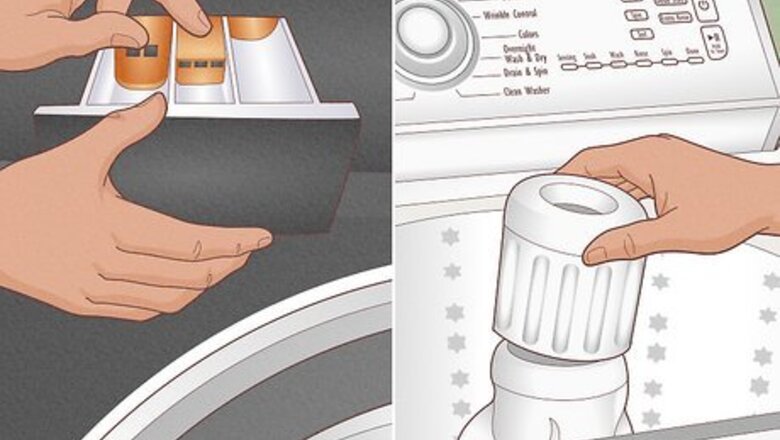
views
- Lift out the dispenser on top of the agitator in the center of top-loading washers. On front-loading washers, pull out the drawer on the outside of the machine.
- Then, fill your sink with hot water and several drops of dish soap. Wipe down the dispenser with a cloth or soft-bristled brush.
- Wipe out the opening of the agitator or drawer with a damp cloth. Then, push the dispenser back in when it’s fully dry.
Removable Dispensers in Front- or Top-Loaders
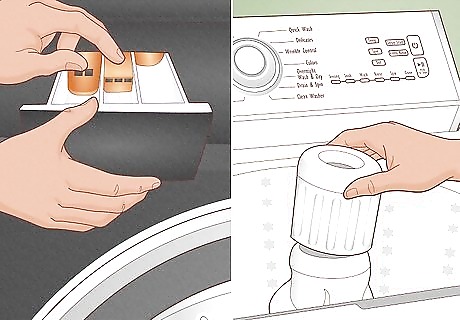
Pull out the dispenser cap or drawer, depending on your washer. Most machines have removable fabric softener dispensers that you easily pull out of the washer. If you have a top-loading machine, the dispenser is likely on top of the center agitator or in a drawer under the lid’s hinges. If you have a front-loading machine, look for the dispenser in a drawer on the front of the machine. For dispensers on top of the agitator: Grip the dispenser and pull it upward. Then, separate the dispenser cup from its housing by squeezing the bottom piece and pulling it upwards. For drawer dispensers: Open the drawer, press down on the blue or white tab towards the back, and pull the drawer out. Check your washing machine’s owner’s manual if you’re still having trouble finding your fabric softener dispenser. If you pull on the dispenser and it doesn’t budge, it’s likely non-removable and bolted to your top or front-loading washer. Clean it following the section below. Most open tray dispensers on the inside of top-loading machines are non-removable.
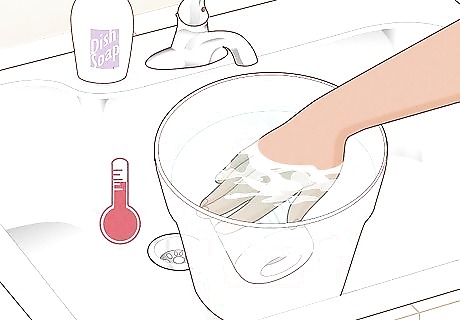
Submerge the dispenser in a mixture of hot water and dish soap. Fill up your sink or a large bucket with hot water and add in several drops of dish soap. Then, swirl the mixture around to get it nice and sudsy. Just drop in your washer’s dispenser cap and its housing, or your entire dispenser drawer. The hot water and dish soap lift up any fabric softener or detergent clogging your dispenser that’s preventing the softener from dispensing.
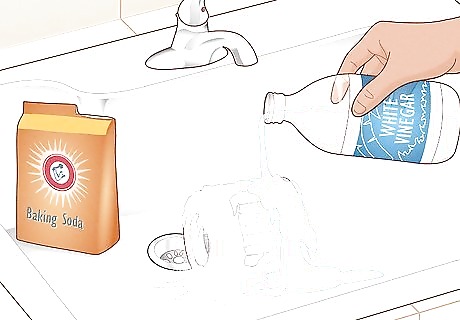
Cover your dispenser with baking soda and vinegar as an alternative. White vinegar and baking soda are natural cleaning products that remove grime and sticky fabric softener residue. Just place your dispenser cap or drawer in your sink and sprinkle it with baking soda. Then, splash it with white vinegar and hot water so the mixture bubbles up and foams. If your fabric softener dispenser has any rubber parts, use hot water and dish soap instead. Vinegar can damage and corrode rubber.
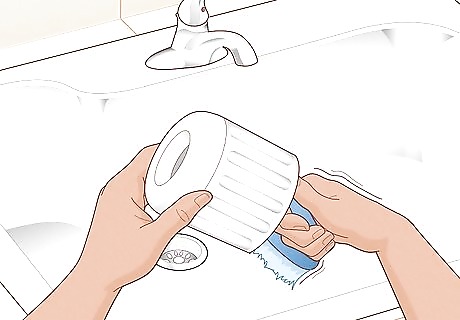
Scrub the dispenser with a sponge or soft-bristled brush. Whether you’re cleaning the dispenser in hot, soapy water or the vinegar and baking soda solution, take a sponge or brush and gently wipe it down. If there are any tough-to-reach spots or corners, use a toothbrush to scrub them clean. If you’re cleaning a dispenser drawer, pull up on the inserts over each compartment to remove them and clean the inside of the tray.
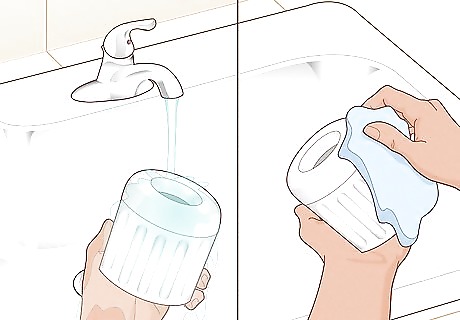
Rinse and dry the dispenser with a soft cloth. Run the dispenser cap and housing, or the drawer, under warm water to wash away the cleaning solution and all the residue you scrubbed off. Then, wipe the dispenser and all its parts dry with a clean, soft cloth. Or, leave the dispenser out on your counter to air dry.
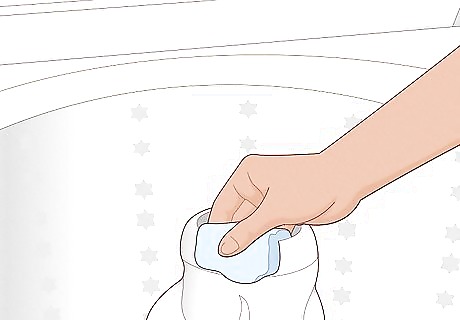
Wipe the inside of the agitator or drawer opening with a wet cloth. With your dispenser still removed, look inside the agitator or the drawer opening. Fabric softener often builds up outside of the dispenser and can prevent it from working properly. Just take a clean cloth or sponge and wet it with warm water. Then, use it to wipe out any gunk or fabric softener residue. If the residue is dried onto the inside of the agitator or drawer, use a soft-bristled brush to scrub it off. If you’re cleaning the inside of the agitator, wet your cloth or brush in a mixture of equal parts baking soda and water to help loosen up the residue.
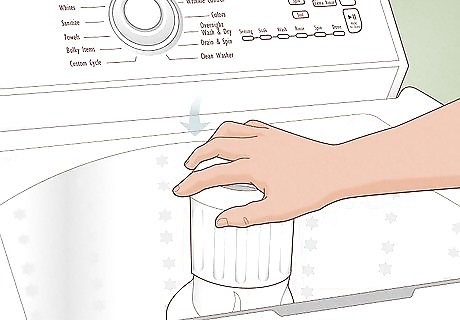
Re-install the fabric softener dispenser. When the dispenser is completely dry, just push it into your machine. For dispensers on top of the agitator, simply press the cup back into its housing and push the dispenser onto the agitator until it snaps in place. For drawer dispensers, snap back on any compartment inserts you removed and slide the drawer into the opening.
Non-removable Dispensers in Top Loaders
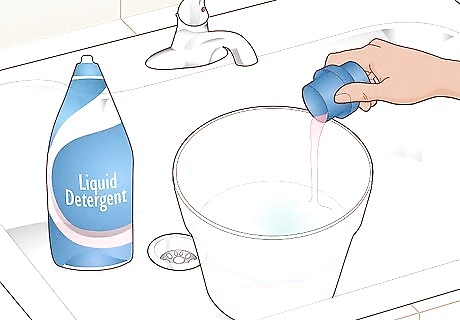
Add warm water and laundry detergent or vinegar to a bucket. Pour a small cap of your regular laundry detergent into a bucket or large mixing bowl. Then, fill it with warm water. Simply swirl the mixture around with a spoon to get it nice and soapy. Alternatively, pour 1 to 2 cups (237-473 ml) of white vinegar inside the dispenser. Vinegar removes residue clogs and neutralizes odors in your machine. To deep clean the dispenser and your washer’s drum, add ½ cup (110 g) of baking soda directly into the bottom of your machine. Most non-removable fabric softener dispensers are on top of the agitator or on one of the corners inside the washer.
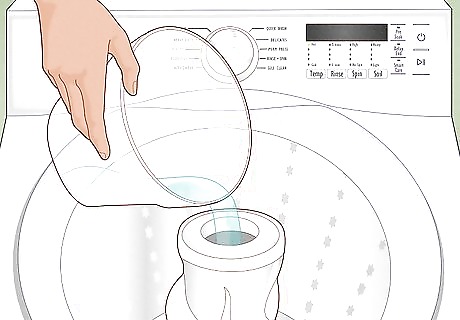
Pour the mixture into the dispenser and run a warm rinse cycle. Slowly tip the bucket or bowl over the dispenser to pour the mixture inside. Then, turn on your machine and start the warm rinse setting. This runs the detergent through the fabric softener dispenser and clears out any residue. If your washer doesn’t have a warm rinse cycle, use a cool rinse setting. Just pour hot water mixed with dish soap into the fabric softener after the rinse finishes. This helps break down and clean the residue clogging the dispenser.
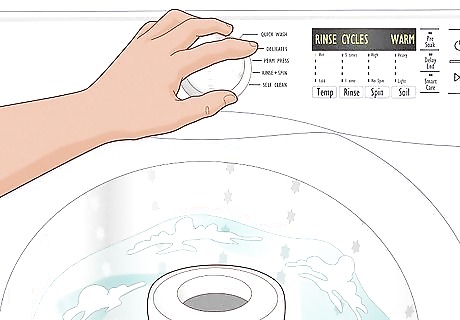
Run 1 to 2 more warm rinse cycles with the detergent or vinegar. Repeat the rinsing process so the detergent solution completely cleans out the grime and build-up inside the fabric softener dispenser. Just mix up a new batch of warm water and laundry detergent or vinegar, pour it into the dispenser, and start the warm rinse cycle. If you’re using a cool rinse cycle, pour the hot water and dish soap mixture through the dispenser after each cycle finishes. Wipe the inside of the fabric softener dispenser with a damp cloth or soft-bristled brush to remove any gunk that isn’t cleaned by the detergent and water mixture.
Preventing Fabric Softener Buildup
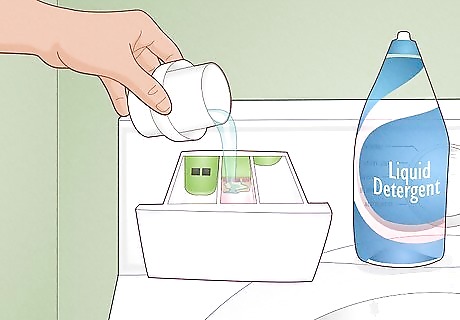
Dilute the fabric softener with ½ to 1 cup (113-237 ml) of water. Check the label instructions on the outside of your fabric softener for the recommended amount to use for your laundry load size. Then, pour in the softener and fill the dispenser to the max line with water. Most washing machine companies recommend diluting fabric softener to prevent residue buildup and stains from forming on your clothes. Do not use more fabric softener than what the label instructions recommend. Using too much fabric softener can cause residue build-up that clogs your dispenser.
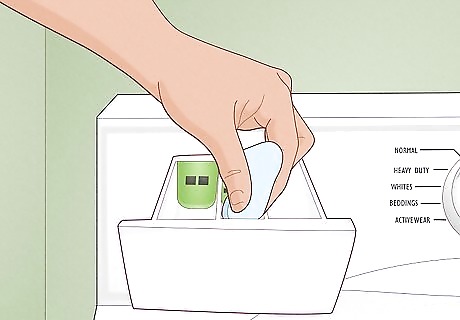
Wipe out the fabric softener dispenser after each use. Fabric softener tends to build up and form a residue over time, so make sure to keep the dispenser clean. After you finish washing a load of laundry, take a damp towel or sponge and wipe out the dispenser cap, drawer, or tray. If you use a powder fabric softener, dry out the dispenser after you wipe it down. This helps prevent the powder from sticking and clumping to the dispenser.
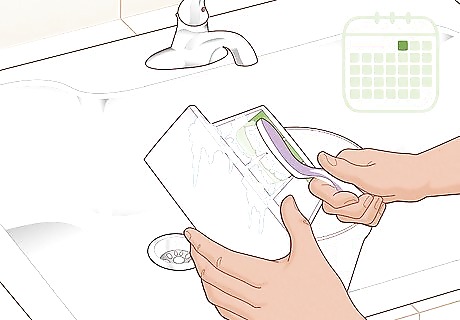
Deep clean the dispenser about once per month. After about 30 washes, take out your machine’s fabric softener dispenser and give it a deep cleaning using the instructions mentioned in the steps above. Or, run it through a warm rinse cycle if it’s non-removable. This removes any stuck-on residue in hard-to-reach areas that regular wiping can’t clean.




















Comments
0 comment